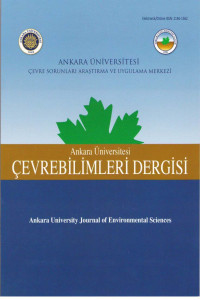Protected Areas in Azerbaijan: Landscape-Ecological Diversity and Sustainability
Establishment of protected areas is one of the most important activities in the conservation of natural resources, biodiversity and gene pools, including, promoting a healthy lifestyle for people in the world. The concept of preserving landscape-ecological diversity and sustainable development promotes the improvement of socio-economic indicators and at the same time ensuring the protection of the environment and ecosystems. The aim of the paper is to examine the relationship between landscape-ecological diversity in protected areas in Azerbaijan and the factors that contribute to this relationship with sustainable development. The article identifies landscape-ecological differences, including the principles and development of protected areas such as National Parks, Nature Reserves and Habitat/Species Management Areas in Azerbaijan. For the first time, a landscape-ecological frame model was developed to ensure environmental balance. A medium-scale digital (1: 600,000) "ecological carcass" map of Azerbaijan has been developed and its structural elements explored. Currently, only 10% of the territory of Azerbaijan are protected areas. Given the anthropogenic pressure on landscapes in Azerbaijan, it has been established that the structure of the territorial organization of protected areas does not comply with existing environmental balance norms. To do this, proposals to increase the area of protected sites to 15% of the country's territory were justified. The current state of use of protected areas in the development of ecotourism has been considered and evaluated as an element of sustainability. Indicators of tourism activity in national parks were analyzed on the basis of statistical sources.
Anahtar Kelimeler:
Protected areas, national park, nature reserve, landscape, sustainability, ecological carcass, ecotourism
Protected Areas in Azerbaijan: Landscape-Ecological Diversity and Sustainability
Keywords:
Protected areas, national park,
___
- Bird Conservation International (2019) 29:177–198. © BirdLife International, 2018 doi: 10.1017/S0959270918000102
- Dudley, N. (Editor) (2008). Guidelines for Applying Protected Area Management Categories. Gland, Switzerland: IUCN. x + 86pp
- Dudley, N., Boucher, J.L., Cuttelod, A., Brooks, T.M., and Langhammer, P.F. (Eds). 2014. Applications of Key Biodiversity Areas: end-user consultations. Cambridge, UK and Gland, Switzerland: IUCN.
- Erken, Güven & Isfendiyaroglu, Sureyya & Yeniyurt, Can & Erkol, Itri & Karataş, Ahmet & Ataol, Murat & Crossman, Neville. (2016). Identifying key biodiversity areas in Turkey: a multi-taxon approach. International Journal of Biodiversity Science, Ecosystem Services & Management. 10.1080/21513732.2016.1182949.
- IUCN (2016). A Global Standard for the Identification of Key Biodiversity Areas, Version 1.0. First edition. Gland, Switzerland: IUCN.
- İbrahimov T.O. Azərbaycanın qoruqları, Bakı, 2015, 160 p.
- Landscape map of the Azerbaijan Republic. The Republic of Azerbaijan. (2017). Scale 1:600000. E.K.Alizadə, A.A.Mi¬ka¬yilov, M.J.Ismayilov, S.Y.Guliyeva and others. The Ministry of Environment and Natural Resources. Baku Cartographic Factory. Baku.
- Law on Specially Protected Natural Areas and Objects, № 840-IQ, march 24, 2000.
- Tuğba Kiper (July 1st 2013). Role of Ecotourism in Sustainable Development, Advances in Landscape Architecture, Murat Özyavuz, IntechOpen, DOI: 10.5772/55749. Available from: https://www.intechopen.com/books/advances-in-landscape-architecture/role-of-ecotourism-in-sustainable-development
- United Nations (2019) The Sustainable Development Goals Report, New York
- UNEP-WCMC and IUCN (2019), Protected Planet: [PA by countries; The World Database on Protected Areas (WDPA)/The Global Database on Protected Areas Management Effectiveness (GD-PAME)] [On-line], [august/2019], Cambridge, UK: UNEP-WCMC and IUCN. Available at: www.protectedplanet.net.
- Пономарев, А. А., Байбаков, Э. И., & Рубцов, В. А. (2012). Экологический каркас: анализ понятий. Ученые записки Казанского университета. Серия Естественные науки, 154 (3), 228-238.
- Yayın Aralığı: Yılda 2 Sayı
- Başlangıç: 2009
- Yayıncı: Ankara Üniversitesi
Sayıdaki Diğer Makaleler
The Role of Anthropogenic Factors in the Transformation of Lankaran Zone Biomes
Some Demographic Trends in Borderline Regions of East Caucasus Mountains (Georgia)
Mariam TSİTSAGİ, Nana KVİRKVELİA
Southern Caucasian Students’ Perceptions of Turkey and Turkish People
Yıldız DEVECİ BOZKUŞ, Eda BEKÇİ ARI
Clustering the Problems of Sustainable Tourism Development in a Destination
İoseb KHELASHVİLİ, Lela KHARTİSHVİLİ, Merab KHOKHOBAİA
Mehmet SOMUNCU, Ayşe OKUYUCU, Merve ALTUNDAL
Protected Areas in Azerbaijan: Landscape-Ecological Diversity and Sustainability
